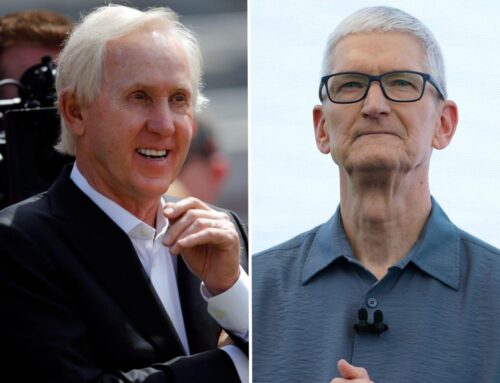Buy on dips if you believe in long-term India growth, 3 investment themes to bet on: Mihir
June 9, 2025
Mihir Vora, CIO, Trust Mutual Fund, advises investors to view market dips as buying opportunities, emphasizing the importance of patience and conviction in the long-term India growth story. He highlights the potential of financialization of savings, physical asset creation, and digitization, particularly in new-age and disruptive business models, as key investment themes for the next 5 to 10 years.
We were just talking about how picture perfect this scenario is. You have got lower inflation, and lower EMIs thanks to the RBI. Lower taxes were taken care of in the Budget itself and good monsoon as well as lower interest rates. Is this construct best suited for the markets?
Mihir Vora: Absolutely. You said it all. It is a long list and broadly we can summarise it by saying that the financial conditions are as loose as they can be and it is the case not only in India, even globally, central banks have been cutting rates in the last few months at a record pace. So, there is a case for a risk-on trade and that is what we are seeing in the world as well as in India.
If you see the Dow, the US markets are also at near highs. We are also touching our highs. It is broadly a risk-on trade fuelled by easy money, easy financial conditions, so enjoy the ride.
Are MFs sitting on cash or are you guys specifically all in?
Mihir Vora: We typically do not keep more than 5-7% cash, so we are not sitting on large amounts of cash. But in general, the MF industry has normal levels of cash, nothing to write home about in a sense it is not extraordinarily high or extraordinarily low. There is enough ammunition on the sidelines and we can see that in the numbers MFs are buying on a daily basis.
The kind of frontloading that RBI has done well, starting with financials, will trickle into a lot of sectors – be it real estate, autos or consumer discretionary. What is your preference list like because in terms of the stock picking, financials is one of the sectors that you are betting on, but in terms of the preference, how do you line it up?
Mihir Vora: That there will be a knee-jerk reaction to the rate cut is a given. So, should see that impact in the next few days also. We saw some impact on Friday, but it should continue for a few days. But if you look at the aggregate picture, the demand conditions on the urban side are still not picking up. For example, two-wheelers have started picking up a bit, but cars have not picked up and plus on in auto you also have the threat of China holding back some of the crucial raw materials for magnets, etc.
You Might Also Like:
In real estate, sales have been robust on the high end side while on the low end side, there is still traction to come. The government has realised that the RBI and the government tightened too much last year. RBI was anyway keeping things tight and the government also slacked off on spending because of the election. If you look at the March numbers, the government spending really shot up quite a lot.
So, the government and the RBI are both trying to play catch-up to make sure that the impact of last year does not stay too long. We did see a cyclical slowdown and they are now trying to make sure that we do not overdo the mistake of last year. So, maybe they are probably even overcompensating which is not a bad thing.
In your most recent report you have mentioned the seven drivers of the next two decades in India. Tell us a little bit more about that and the sectors that stand to gain the most.
Mihir Vora: These are more of the macro trends or mega trends if you say, things like demographics, digitization, democracy which are part of our structural story. Then, you have things like digitization which is technological disruption in which India has actually leap-frogged into a lot of technology and then, you have things like physical infrastructure creation which is going to be the story for the next few years because if we have to compete with China, we have to create a lot of infrastructure.
So, the seven Ds basically talk about these seven mega trends. The themes that arise from these are basically financialization of savings, physical asset creation. In financialization of savings all the lenders will do well because we have to grow at GDP plus, but then the capital market players, the wealth managers, the broking, the asset management will continue to do better. Everything will tap into the higher savings pool because as income levels rise, the savings pools rise at a rate which is much faster than GDP growth.
You Might Also Like:
So, the capital-market linked, the savings-linked players will grow faster than the lenders. Physical asset creation is all the things that we talk about in terms of job creation, China plus one, Make in India, aatmanirbharta, defence, T&D all the sectors where we have to invest a lot to sustain this 6-7% growth is the physical asset creation theme.
So, financialization of savings, physical asset creation and the third theme that we like is digitization where basically new-age companies, new business models, disruptive business models those are the kind of things that we like. And these are plays for the next 5 to 10 years, so we will just stick to them.
But when you look at 5 to 10 years, everything looks quite okay, but everything in the market is a function of the price at what you have bought or paid…
Mihir Vora: And the point is that with these valuations and these kinds of market levels, you have to take a longer-term call.
Yes, you have no option. But that is what I am saying, listening to you if someone says okay, I want to put my money now into capital markets themes, where is the opportunity because you have already seen such a big runup.
Mihir Vora: Here is where our inherent philosophy of terminal value investing comes into play because the way we look at it is that markets end up optically paying a higher premium for stocks which have a long runway of growth. If in the runway of growth, for example, the capital market players are not 3-4 years, but 10, 15, 20 years, then these stocks will continue to look optically expensive on the next year’s PE or the two-year, three-year forward PE. The point is that the market is assuming or giving credit to the fact that these sectors probably will grow at say 10-15% or 15% to 20% not for six-seven years, but maybe even for 15 years.
Now, no analyst builds in a growth rate of more than 7-8% beyond 10 years, that is where the philosophy goes wrong because we have seen year after year in the last 30 years there have been so many stocks and sectors which grew for 15%, 20%, even for 20 years, that is where the valuations start look expensive and these stocks even 20 years back looked expensive and five years ago also they looked expensive.
NSE is not even listed and it is quoting all that valuation.
Mihir Vora: Exactly. In high growth stocks and sectors, especially stocks and sectors where the runway of growth is very long, you will end up paying optically higher premiums in the shorter term.
Back in March and April, there was a broad-based selloff rather than the consensus call to stick with the largecaps. Now you are highlighting that it is a risk-on in the markets. Do you believe that now is the time and given the way fundamentals are shaping up, can one start allocating more towards the SMIDs?
Mihir Vora: Definitely, I think every dip is a time to buy frankly because it is about patience and conviction. Your patience will be tested but your conviction will be rewarded. In times like these you really go and check it out. Even if you have the courage and the capacity, add more because ultimately you will have to take a longer-term call on the India story – whether India will do better than the rest of the world over the next 10, 15, 20, years. If the call is yes, then every dip is a time to buy.
(You can now subscribe to our ETMarkets WhatsApp channel)
Search
RECENT PRESS RELEASES
Related Post







